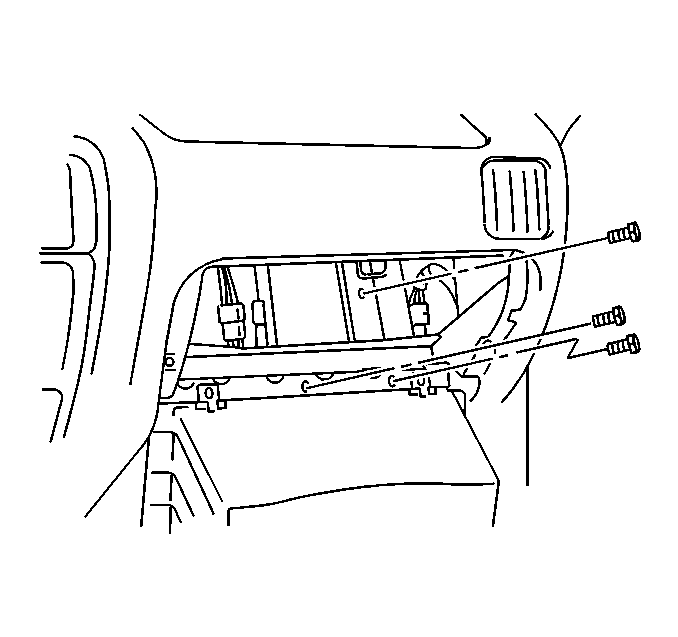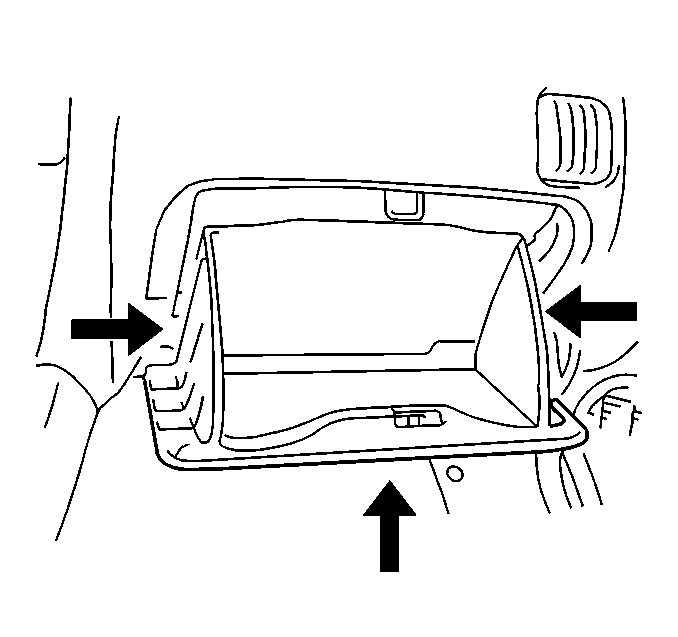Removal Procedure
Notice: Check the resistance values of all PCM relays, solenoids, and other output controls before replacing or substituting the Powertrain Control Module (PCM). Check all the sensor wiring and the PCM output control circuits for a short to ground before replacing or substituting the PCM. Perform all circuit repairs or malfunctioning component part replacements before installing a replacement or substitute PCM. This will prevent damage to the replacement or substitute PCM.
Notice: In order to prevent possible Electrostatic Discharge damage to the PCM, Do Not touch the connector pins or the soldered components on the circuit board.
Important: Service of the powertrain control module (PCM) consists of the replacement of the PCM. The PCM has no serviceable parts. The PCM does not have a programmable read only memory (PROM) chip to replace inside the PCM. The PCM does not have an erasable programmable read only memory (EPROM) chip to recalibrate. Replace the PCM as a complete assembly if the PCM is determined to be faulty.
Important: When replacing the production powertrain control module (PCM) with a service PCM, transfer the broadcast code and production PCM number to the service PCM label. This will allow for positive identification of the PCM throughout the service life of the vehicle.
- Disconnect the negative battery cable.
- Open the glove box.
- Apply pressure to the sides of the glove box in order to release the two side catches and pull the glove box down.
- Remove the three bolts and the PCM bracket from behind the glove box.
- Disconnect the three PCM electrical connectors.
- Remove the PCM from the passenger compartment.
Caution: Unless directed otherwise, the ignition and start switch must be in the OFF or LOCK position, and all electrical loads must be OFF before servicing any electrical component. Disconnect the negative battery cable to prevent an electrical spark should a tool or equipment come in contact with an exposed electrical terminal. Failure to follow these precautions may result in personal injury and/or damage to the vehicle or its components.


Installation Procedure
- Connect the three PCM electrical connectors.
- Install the PCM bracket to the mounting position behind the glove box.
- Secure the PCM bracket with the three bolts.
- Push the glove box up in order to reset the two side catches.
- Connect the negative battery cable.

Notice: Use the correct fastener in the correct location. Replacement fasteners must be the correct part number for that application. Fasteners requiring replacement or fasteners requiring the use of thread locking compound or sealant are identified in the service procedure. Do not use paints, lubricants, or corrosion inhibitors on fasteners or fastener joint surfaces unless specified. These coatings affect fastener torque and joint clamping force and may damage the fastener. Use the correct tightening sequence and specifications when installing fasteners in order to avoid damage to parts and systems.
Tighten
Tighten the PCM bracket bolts to 6 N·m (54 lb in).

Tighten
Tighten the negative battery cable terminal retainer to 5.5 N·m
(49 lb in).
